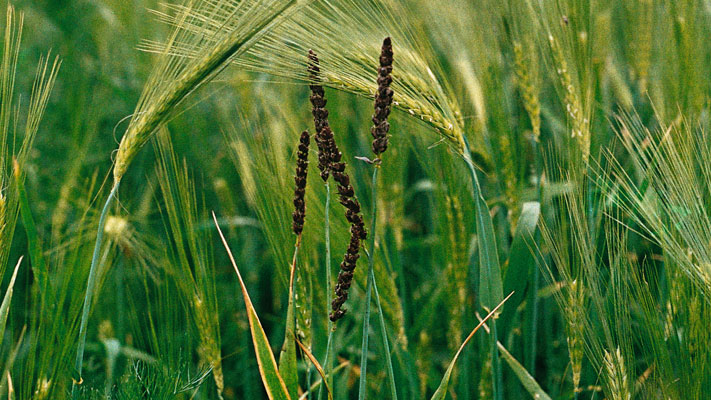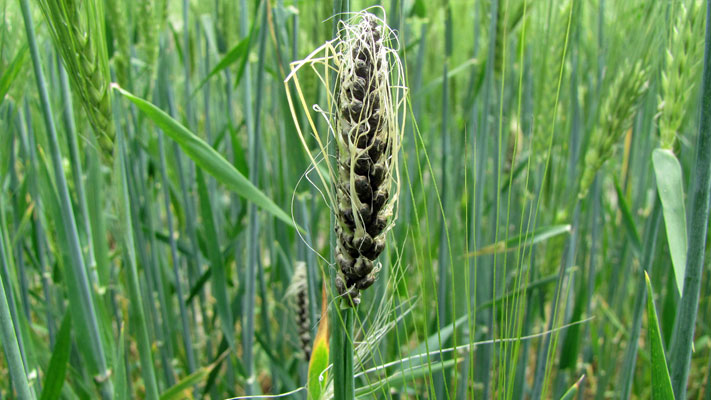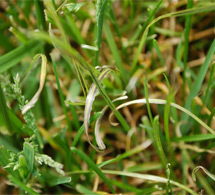Bunt
Bunt is a disease of wheat, rye and other grasses and is known by several names including common bunt, stinking bunt, stinking smut, ball smut and covered smut. Bunt is caused by two fungi species which produce masses of soot-like spores in the grains or ears. Plants may appear stunted and reductions in yield and grain quality are common. There is a zero tolerance for grain contaminated with bunt at receival points across Australia. Karnal bunt is a highly invasive disease which significantly affects grain quality, so the Australian grains industry is working hard to prevent its introduction into Australia.
Refer to links below for more information on other smuts and bunt.

Description
Infected plants are difficult to identify until harvest, as the fungus remains hidden inside the grain as a mass of stinking bunt spores. Infected mature heads can appear darker and glumes are often spread open by the large bunt balls within the glume. Grains look greyish-brown and if the seed coat is broken or crushed, spores are released emitting a stinking fish-like odour.
Control
Seed treatments are very effective at controlling bunt in wheat and should be applied every year to prevent infection. Good coverage of the grain with an effective seed treatment is essential to maintain disease free crops. EverGol® Prime, EverGol® Energy, Jockey® Stayer® and Raxil® T are registered for the control of bunt (common bunt Tilletia. spp.) in wheat.
References
Department of Primary Industries and Regional Development (DPIRD) (2015), ‘Diagnosing common bunt in wheat’, https://www.agric.wa.gov.au/mycrop/diagnosing-common-bunt-wheat
Holloway, G (2012), ‘Bunts and Smuts of Cereals’, Agriculture Victoria, http://agriculture.vic.gov.au/agriculture/pests-diseases-and-weeds/plant-diseases/grains-pulses-and-cereals/bunts-and-smuts-of-cereals
Thomas, G, Jayasena, K, Beard, C and Hills, A (2017), ‘Smut and bunt diseases of cereal – biology identification and management’, Department of Primary Industries and Regional Development (DPIRD), https://www.agric.wa.gov.au/print/node/326








